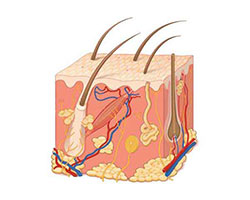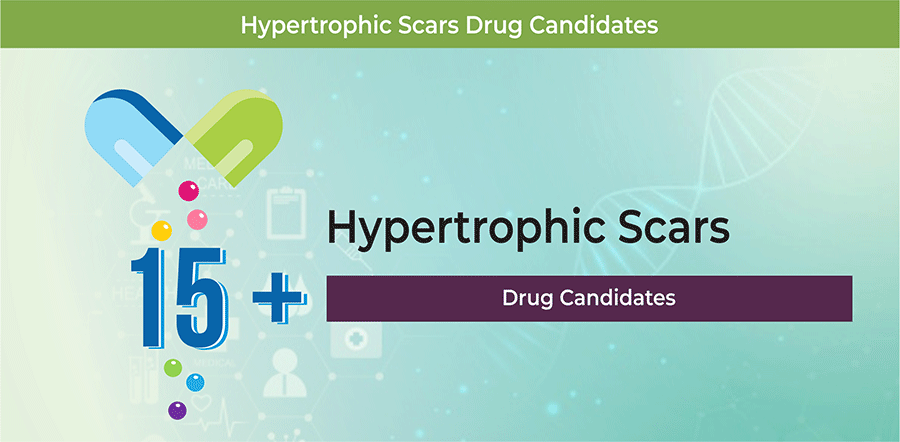
| Report Code: PP10221 | Report Type: Indication Pipeline Reports | Pages: 250+ | Available format: |
| Therapeutic Area(s): | Dermatology |
Overview
Hypertrophic scar can be identified as a thickened and raised scar that develops at the site where skin is injured. A hypertrophic scar is a result of an abnormal response to a trauma or injury. The scar primarily occurs when the myofibroblasts produce a large amount of collagen during healing. This can occur when a wound is infected or inflamed, under a great tension, or left to heal without stitches. The scar does not extend more than the boundary of the original wound.

Hypertrophic scars can be easily diagnosed by physical examination. With time, these scars tend to flatten and become paler. The commonly used treatment options for these scars include application of topical silicone gel, pressure therapy, laser treatments, radiation therapy, steroid injections, cryotherapy, and surgical excision. In addition, SRT-100 (Sensus Healthcare), Kelocote spray (Advanced Bio-Technology Inc.), and Kenalog-10 (Bristol-Myers Squibb Company) are some of the drugs approved for the treatment of hypertrophic scars.
Positive clinical trial results and strategic decisions of companies to collaborate with other companies are also facilitating drug development in hypertrophic scars therapeutics pipeline arena. Additionally, the issuance of patents helps in achieving different milestones in the form of grants and designations from regulatory bodies and institutes, including the U.S. Food and Drug Administration (USFDA), the European Medicines Agency (EMA), and the National Institutes of Health (NIH).
Pipeline Analysis
As of March 2019, the hypertrophic scars therapeutics pipeline comprised 15+ therapeutic candidates in different stages of development.
Epidemiology Analysis
The report provides epidemiology forecast of hypertrophic scars for seven major markets, such as the U.S., Japan, and EU5 countries (the U.K., Germany, France, Italy, and Spain). It covers prevalent and treated patient population for the period 2016–2028. According to a study published in Journal of Burn Care and Research (2011), the prevalence rate of hypertrophic scars due to burn injuries in the U.S. varied between 32% and 72%.
Competitive Landscape
Some of the key players involved in the development of hypertrophic scars therapeutics include Bristol-Myers Squibb Company, Sirnaomics Inc., Phio Therapeutics Corp., Allergan plc, Sensus Healthcare, Advanced Bio-Technology Inc., OliX Pharmaceuticals Inc., SiSaf Ltd., Juventas Therapeutics Inc., HUGEL Inc., TOPADUR PHARMA AG, Phio Pharmaceuticals Corp., and Lemonex Inc.
Report Insights
Some highlights of the report “Hypertrophic Scars Therapeutics – Pipeline Analysis 2019, Clinical Trials and Results, Patents, Designations, Collaborations, and Other Developments” have been mentioned below: